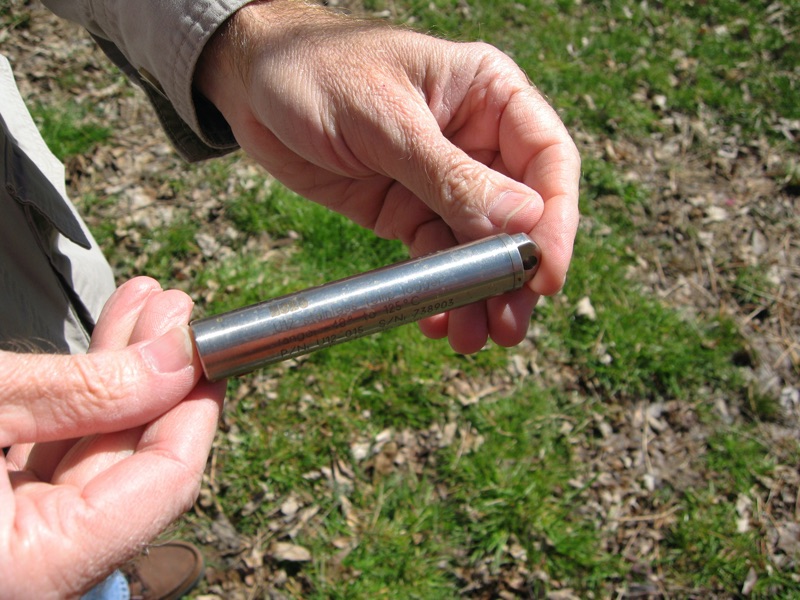
Soil temperature triggers periodical cicada emergences:
James Edward Heath in his paper Thermal Synchronization of Emergence in Periodical “17-year” Cicadas (Homoptera, Cicadidae, Magicicada)1 discovered that periodical cicadas will emerge, on average, when the soil 8 inches below the ground reaches 64 degrees Fahrenheit:
Soil temperature at 20-cm [7.87 in] depth in seven locations averaged 17.89 C [64.202 F] at the time of emergence, regardless of date. Cicadas emerging from burrows had average body temperatures of 18.04 C [64.472 F]. Synchrony in emergence may be due to animals reaching a critical threshold temperature.
The soil warms their bodies and that triggers the cicadas to emerge.
A warm rain, which will seep into the earth and warm the bodies of cicadas, can trigger a “particularly intensive” emergence.
Alexander and Moore (1962) noted that emergences were particularly intensive following warm rains ( > 2 0 C ? ). I believe this suggests that the soil temperature probably was near emergence temperature and the heat transported by the water percolating into the ground warmed the soil sufficiently to raise soil temperature above the emergence threshold.
Some unanswered questions I have are: 1) how long does the temperature have to be 64°F+ – just a moment, or a certain number of hours, and 2) because we know not all cicadas emerge instantaneously, what is the maximum temperature that for certain will clear them from the soil?
This is an example of a temperature probe use to study the emergence temperature of cicadas. The probe in this picture is held by cicada researcher Gene Kritsky:

Note that males typically emerge before females and that the larger ‘decim species emerge before the smaller cassini species.
For a more modern, crowd-sourced study of this see the radiolab Cicada Tracker project.
I think I know what you’re thinking: “I don’t own a temperature probe, how can I guess when the temperature is 64°F 8” below the soil? Direct sunlight, air temperature, and rain warms the soil. Southern facing land will warm sooner than northern facing land. Land in direct sunlight will warm faster than land in shade. Rainfall on an 80°+ day will quickly do the trick, but two weeks of temps in the 70°’s should work as well. So keep an eye on the 10-day weather forecast and watch for those days in the 70s, and especially the 80s.
Minimum Flight Temperature:
Their body temperature needs to be a little warmer than that to fly. Their minimum flight temperature (MFT) is 18-21°C / 65-70°F. The temperature varies depending on the Brood and species. They’ll need a few more degrees before they’re fully functional, and start singing and mating.
So, until their bodies are about 72°F (“room temperature”) they won’t be flying, singing and mating.
Maximum voluntary tolerance temperature:
Maximum voluntary tolerance temperature (MVT) for periodical cicadas is 31-34°C / 88-93°F, again depending on Brood and species. Maximum voluntary tolerance is the point at which cicadas seek shade and when thermoregulation takes precedence over other behaviors.
See Thermal responses of periodical cicadas: within and between brood parity (Hemiptera: Cicadidae: Magicicada spp.) and Thermoregulation by Endogenous Heat Production in Two South American Grass Dwelling Cicadas (Homoptera: Cicadidae: Proarna) for more information.
1 Thermal Synchronization of Emergence in Periodical “17-year” Cicadas (Homoptera, Cicadidae, Magicicada) by James Edward Heath, American Midland Naturalist, Vol. 80, No. 2. (Oct., 1968), pp. 440-448.

